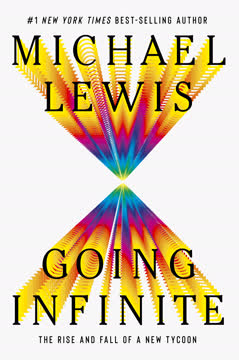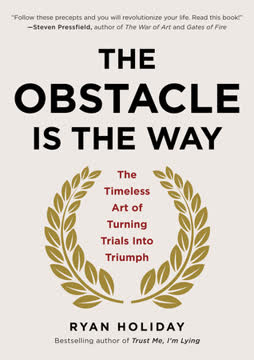Key Takeaways
1. The rise of collaborative consumption challenges traditional ownership
"We don't want the CD; we want the music it plays. We don't want the disc; we want the storage it holds. We don't want the answering machine; we want the messages it saves."
Shift in consumer mindset. Collaborative consumption is transforming our relationship with physical products and personal ownership. This new paradigm focuses on accessing the benefits of products without the need for exclusive ownership. It's driven by a growing realization that ownership often comes with burdens like maintenance, storage, and obsolescence.
Emerging models. Three main systems of collaborative consumption are reshaping markets:
- Product Service Systems: Pay for the benefit of a product without owning it (e.g., car sharing)
- Redistribution Markets: Redistribute used goods from where they're not needed to where they are (e.g., eBay)
- Collaborative Lifestyles: People with similar interests band together to share less tangible assets (e.g., time, skills, space)
2. Technology enables efficient sharing and access over ownership
"Robin Chase, founder of Zipcar and the ride-sharing service GoLoco, and one of the pioneering thinkers on maximizing idling capacity via technology, says, 'This was what the Internet was made for, an instant platform sharing excess capacity among many people.'"
Digital platforms. The internet and mobile technologies have dramatically reduced the "transaction costs" of sharing and collaborative consumption. Online platforms make it easy to connect people with complementary needs, enabling efficient peer-to-peer exchanges of goods and services.
Idling capacity. Technology helps identify and utilize "idling capacity" – the untapped value in underused assets. Examples include:
- Personal vehicles sitting idle 23 hours a day
- Spare bedrooms or entire homes during vacations
- Seldom-used tools and equipment
Real-time coordination. GPS, smartphones, and social networks allow for real-time matching of supply and demand, making collaborative consumption convenient and often more appealing than traditional ownership or rental models.
3. Product service systems offer convenience without the burden of ownership
"Access becomes the privilege and ownership the burden."
Redefining products as services. Product Service Systems (PSS) allow consumers to pay for the benefit of a product without the responsibilities of ownership. This model disrupts industries built on individual private ownership.
Examples and benefits:
- Car sharing (e.g., Zipcar): Access to a car without maintenance, insurance, or parking hassles
- Netflix: Vast selection of movies without the need to store physical media
- Tool libraries: Access to specialized equipment without the cost of purchasing rarely-used items
Environmental impact. PSSs often lead to more efficient use of resources, as a single product can serve multiple users. This reduces the overall production of goods and the associated environmental impact.
4. Redistribution markets extend product lifecycles and reduce waste
"Every single person who joins or uses Collaborative Consumption creates value for another person, even if this was not the intention."
Second-hand renaissance. Online platforms have revitalized the market for used goods, making it easier than ever to find new homes for unwanted items. This extends the useful life of products and reduces waste.
Key players:
- eBay: The grandfather of online redistribution markets
- Freecycle: Gifting network for free exchange of unwanted items
- ThredUP: Online consignment for children's clothing
Beyond environmental benefits. Redistribution markets often create unexpected social value:
- Building community connections through local exchanges
- Providing affordable access to goods for lower-income individuals
- Creating a "gift economy" that fosters generosity and reciprocity
5. Collaborative lifestyles foster community and maximize resource utilization
"We are using the Internet to get off the Internet and form a twenty-first-century civil society."
Sharing intangible assets. Collaborative lifestyles involve the sharing of less tangible resources such as time, space, skills, and money. This system taps into people's desire for community and connection while maximizing the use of available resources.
Examples:
- Coworking spaces: Shared office environments for independent workers
- Skillshare: Platform for peer-to-peer learning and teaching
- Couchsurfing: Network connecting travelers with local hosts offering free accommodation
Building social capital. These collaborative systems often create stronger community bonds and expand people's social networks. They provide opportunities for meaningful interactions that go beyond traditional consumer-provider relationships.
6. Trust mechanisms and reputation capital fuel peer-to-peer exchanges
"Trust is the new black."
Overcoming stranger danger. For collaborative consumption to work, people need to trust strangers with their possessions, homes, and sometimes even personal safety. Online platforms have developed sophisticated trust mechanisms to facilitate this.
Key trust-building tools:
- User reviews and ratings
- Identity verification
- Secure payment systems
- Community moderation
Reputation as currency. In the collaborative economy, a person's reputation becomes a valuable asset. Good behavior and positive interactions build "reputation capital" that can be leveraged across multiple platforms and exchanges.
7. Collaborative consumption redefines value and transforms consumer behavior
"We became hooked on the likes of Apple, Volkswagen, and Abercrombie & Fitch because these brands helped us create self-esteem and identity. Now we are latching onto the rising brands of Collaborative Consumption for similar reasons but through interactions and community, not mere shopping."
Shift in consumer values. Collaborative consumption is changing how people define value and status. The focus is shifting from ownership of things to access to experiences and community belonging.
New metrics of success:
- Reputation and trust ratings
- Diversity of experiences
- Size and quality of one's sharing network
Behavioral change. As people engage in collaborative consumption, they often become more open to other forms of sharing and community-oriented behaviors. This can lead to a broader shift in consumer mindset and lifestyle choices.
8. Design thinking is crucial for creating successful collaborative systems
"Designers must help find a healthy balance between the needs of consumers and companies and the collective interest of society."
Systems-level approach. Successful collaborative consumption platforms require designers to think beyond individual products. They must consider the entire ecosystem of user interactions, trust-building, and value creation.
Key design principles:
- Fluidity of use: Making systems easy and intuitive to adopt
- Replication: Creating models that can be adapted to different contexts
- Diversified access: Providing multiple entry points for users
- Enhanced communications support: Facilitating clear and efficient interactions
Product design evolution. Even physical products are being reimagined for collaborative consumption:
- Durability for multiple users
- Modularity for easy repair and upgrading
- Integration with digital platforms for seamless sharing
9. Community-driven brands thrive in the collaborative economy
"Community is the brand, and a brand is owned by the community."
Shift in brand building. In the collaborative economy, successful brands are often built from the bottom up by engaged user communities rather than top-down through traditional marketing.
Characteristics of collaborative brands:
- Transparency and authenticity
- User empowerment and co-creation
- Strong sense of shared purpose or values
Examples:
- Airbnb: Hosts and travelers create unique experiences that define the brand
- Etsy: Sellers and buyers form a community around handmade and vintage goods
- Zipcar: Members identify as "Zipsters" and feel part of a movement
10. Collaborative consumption presents a sustainable alternative to hyper-consumerism
"Collaborative Consumption shows consumers that their material wants and needs do not need to be in conflict with the responsibilities of a connected citizen."
Environmental benefits. By maximizing the use of existing resources and reducing the need for new production, collaborative consumption often has a lower environmental impact than traditional consumption models.
Economic opportunities. The collaborative economy creates new business models and income streams while often providing more affordable access to goods and services for consumers.
Social impact. Collaborative consumption can:
- Strengthen communities
- Increase social connections
- Foster a sense of shared responsibility
Challenges to overcome:
- Regulatory hurdles in some industries
- Resistance from established businesses
- Ensuring equitable access and preventing exploitation
</most_relevant_traits>
Last updated:
Review Summary
What's Mine Is Yours receives mostly positive reviews, with readers praising its insights into collaborative consumption and the sharing economy. Many find it thought-provoking and relevant, though some note its dated examples. Readers appreciate the book's exploration of how technology enables new forms of sharing and community-building. Critics point out repetitive content and overly optimistic views. Overall, the book is seen as a valuable introduction to the concept of collaborative consumption, despite being written in 2010 before some major developments in the field.
Similar Books










Download PDF
Download EPUB
.epub digital book format is ideal for reading ebooks on phones, tablets, and e-readers.




